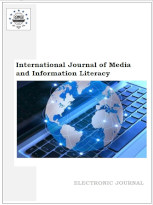1 June 18, 2025
1. Sergey Belentsov
Improving Information Literacy on the Development of the Younger Generation’s Civic Engagement
International Journal of Media and Information Literacy. 2025. 10(1): 3-12.
Number of views: 138 Download in PDF
2. Sanobar DjumanovaInternational Journal of Media and Information Literacy. 2025. 10(1): 3-12.
Abstract:
Currently, the public, educators and politicians should work more actively to prevent extremist and aggressive sentiments and deviant behavior among modern youth. This can be achieved, among other things, by improving information literacy on the formation and development of positive civic engagement among the younger generation. The purpose of this manuscript is to examine the phenomenon of civic engagement of the younger generation by improving information literacy on the phenomenon under consideration. Information literacy on the development of civic engagement is enhanced by historical and pedagogical understanding of the experience of civic and patriotic education of schoolchildren and the fundamental content of the program for the development of positive civic engagement. The program is presented fully and comprehensively and consists of the following sections: program passport, goals and objectives, results of activities, scientific and methodological justification of the program, roadmap for organizing the process of formation and development of a positive image of civic engagement of the younger generation. This article may be useful to specialists in the field of educational work, methodologists, educators and researchers in the educational field of pedagogical science in terms of social and civic education in the fragile and changing conditions of modern times.
Currently, the public, educators and politicians should work more actively to prevent extremist and aggressive sentiments and deviant behavior among modern youth. This can be achieved, among other things, by improving information literacy on the formation and development of positive civic engagement among the younger generation. The purpose of this manuscript is to examine the phenomenon of civic engagement of the younger generation by improving information literacy on the phenomenon under consideration. Information literacy on the development of civic engagement is enhanced by historical and pedagogical understanding of the experience of civic and patriotic education of schoolchildren and the fundamental content of the program for the development of positive civic engagement. The program is presented fully and comprehensively and consists of the following sections: program passport, goals and objectives, results of activities, scientific and methodological justification of the program, roadmap for organizing the process of formation and development of a positive image of civic engagement of the younger generation. This article may be useful to specialists in the field of educational work, methodologists, educators and researchers in the educational field of pedagogical science in terms of social and civic education in the fragile and changing conditions of modern times.
Number of views: 138 Download in PDF
Indicators of Media Literacy of Uzbek Media Representatives Related to the Use of Artificial Intelligence
International Journal of Media and Information Literacy. 2025. 10(1): 13-26.
Number of views: 115 Download in PDF
3. Aylin del Rosario Lagúnes-Hernández, Ángeles García-Aquino, Arturo García-Santillán, Violetta S. MolchanovaInternational Journal of Media and Information Literacy. 2025. 10(1): 13-26.
Abstract:
The article demonstrates that the use of artificial intelligence in Uzbek journalism, while facilitating journalists' work, has also become a factor in amplifying disinformation. Based on a survey conducted among 124 journalists and media representatives, the study examines the potential changes artificial intelligence has brought to the professional activities of Uzbek journalists today, as well as the media literacy levels of industry professionals related to the use of artificial intelligence. The data obtained from the survey analyzes the professional integrity of Uzbek journalists in their creative process during the era of artificial intelligence, their level of awareness regarding the risk of disinformation when working with AI, and the impact of neural networks on the activities of media representatives. The findings can be utilized in developing legal and ethical standards for the use of artificial intelligence in journalistic practices, as well as in enriching the content of journalism education and professional development courses.
The article demonstrates that the use of artificial intelligence in Uzbek journalism, while facilitating journalists' work, has also become a factor in amplifying disinformation. Based on a survey conducted among 124 journalists and media representatives, the study examines the potential changes artificial intelligence has brought to the professional activities of Uzbek journalists today, as well as the media literacy levels of industry professionals related to the use of artificial intelligence. The data obtained from the survey analyzes the professional integrity of Uzbek journalists in their creative process during the era of artificial intelligence, their level of awareness regarding the risk of disinformation when working with AI, and the impact of neural networks on the activities of media representatives. The findings can be utilized in developing legal and ethical standards for the use of artificial intelligence in journalistic practices, as well as in enriching the content of journalism education and professional development courses.
Number of views: 115 Download in PDF
Financial Knowledge and Its Relationship with Sociodemographic Variables: A Study in Adolescent Students in a Public Institution
International Journal of Media and Information Literacy. 2025. 10(1): 27-39.
Number of views: 102 Download in PDF
4. Ibtesam Mazahir, Sidrah YaseenInternational Journal of Media and Information Literacy. 2025. 10(1): 27-39.
Abstract:
The purpose of the study focuses on analyzing the savings decision by basic school students and its relationship with gender, age, number of siblings, as well as financial education variables from their personal and family environment. For this, the working hypotheses are H1. The decision to save is related to the sociodemographic characteristics of the respondent (sex, age, number of siblings). H2. The decision to save is related to financial education variables of the personal and family environment of the student surveyed. The participants are first grade students at the secondary level, between 10 and 17 years of age. Using non-probabilistic self-determination sampling, an instrument designed by Barba (2018) was applied to collect data, obtaining 313 cases. Considering that they are under age, they had the approval of their parents at all times, being notified through the teachers in charge of the school groups.The scale was applied over 2 months in person in the educational institution, with the support of the teaching staff. First, the frequencies of each of the items are obtained and then to test the hypotheses, we use a dichotomous Logit econometric model. The main findings demonstrate a relationship between the savings decision and the number of siblings the student has. Likewise, the decision to save is related to financial education variables of the personal and family environment of the student surveyed. The results emphasize the role that the family environment has in young people's savings decisions. Therefore, we suggest promote financial education from home to encourage learning about financial education at an early age.
The purpose of the study focuses on analyzing the savings decision by basic school students and its relationship with gender, age, number of siblings, as well as financial education variables from their personal and family environment. For this, the working hypotheses are H1. The decision to save is related to the sociodemographic characteristics of the respondent (sex, age, number of siblings). H2. The decision to save is related to financial education variables of the personal and family environment of the student surveyed. The participants are first grade students at the secondary level, between 10 and 17 years of age. Using non-probabilistic self-determination sampling, an instrument designed by Barba (2018) was applied to collect data, obtaining 313 cases. Considering that they are under age, they had the approval of their parents at all times, being notified through the teachers in charge of the school groups.The scale was applied over 2 months in person in the educational institution, with the support of the teaching staff. First, the frequencies of each of the items are obtained and then to test the hypotheses, we use a dichotomous Logit econometric model. The main findings demonstrate a relationship between the savings decision and the number of siblings the student has. Likewise, the decision to save is related to financial education variables of the personal and family environment of the student surveyed. The results emphasize the role that the family environment has in young people's savings decisions. Therefore, we suggest promote financial education from home to encourage learning about financial education at an early age.
Number of views: 102 Download in PDF
Media Literacy in the Age of Misinformation: A Mixed-Methods Analysis of Adult Media Literacy across Urban and Rural Areas of Pakistan
International Journal of Media and Information Literacy. 2025. 10(1): 40-46.
Number of views: 87 Download in PDF
5. Abiola John Olarinde, Miguel Angel Marzal Garcio-QuismondoInternational Journal of Media and Information Literacy. 2025. 10(1): 40-46.
Abstract:
This study investigates the state of media literacy among adults in Pakistan in the context of rising misinformation, political polarization, and digital inequality. Employing a mixed-methods sequential explanatory design, the research combines survey data from 500 participants across four provinces with 30 in-depth interviews to explore how socio-demographic factors, such as education, age, gender, and digital access, influence media literacy. Quantitative results reveal that only 41 % of respondents can identify biased news, 18 % have engaged in content creation, and 33 % understand privacy settings on social media. Urban respondents performed significantly better than rural ones, with education level positively correlating with media literacy (r = 0.62, p < 0.01) and age negatively associated with digital skills (r = -0.54, p < 0.05). Thematic analysis of qualitative data highlights distrust in mainstream media, generational gaps in media use, and socio-cultural barriers, particularly affecting women in rural areas. These findings underscore the urgent need for inclusive and context-sensitive media literacy initiatives in Pakistan. The study contributes to global discourses on digital inclusion and supports Sustainable Development Goal 4 on equitable access to quality education.
This study investigates the state of media literacy among adults in Pakistan in the context of rising misinformation, political polarization, and digital inequality. Employing a mixed-methods sequential explanatory design, the research combines survey data from 500 participants across four provinces with 30 in-depth interviews to explore how socio-demographic factors, such as education, age, gender, and digital access, influence media literacy. Quantitative results reveal that only 41 % of respondents can identify biased news, 18 % have engaged in content creation, and 33 % understand privacy settings on social media. Urban respondents performed significantly better than rural ones, with education level positively correlating with media literacy (r = 0.62, p < 0.01) and age negatively associated with digital skills (r = -0.54, p < 0.05). Thematic analysis of qualitative data highlights distrust in mainstream media, generational gaps in media use, and socio-cultural barriers, particularly affecting women in rural areas. These findings underscore the urgent need for inclusive and context-sensitive media literacy initiatives in Pakistan. The study contributes to global discourses on digital inclusion and supports Sustainable Development Goal 4 on equitable access to quality education.
Number of views: 87 Download in PDF
Information Literacy in the Context of Electronic Learning in India: a Phenomenographic Study
International Journal of Media and Information Literacy. 2025. 10(1): 47-55.
Number of views: 96 Download in PDF
6. Shinta Prastyanti, A.I. Sulaiman, T.N. Adi, F.C. RangelInternational Journal of Media and Information Literacy. 2025. 10(1): 47-55.
Abstract:
This study explores the concept of information literacy within e-learning environments through a phenomenographic lens, aiming to understand how LIS professionals and educators’ experience and use information effectively in virtual learning contexts either as a learner or an instructor. The method seeks to uncover the different ways IL practitioners perceive and approach information literacy tasks in online settings. Data were collected through semi-structured interviews for 12 LIS professionals – PhD students of LIS, LIS faculty, senior and junior librarians of higher institutions in India who have had electronic learning experience. The resulting analysis of outcome space identifies six dimensions of variation and seven categories in Table 3 with foci of intersection. The evolving relationship of the categories was also revealed in a basic target diagram with critical thinking skills as the nucleus. These categories show diverse understanding of IL practitioners in terms of skills and other requirements of IL in the context of VLE such as critical thinking, computer technology facility, independent learning, ethical use, IL instruction, learning outcome and expert’s opinions. The findings highlight the complexity of information literacy in e-learning environments and emphasize the importance of designing instructional practices and resources that address these diverse experiences.
This study explores the concept of information literacy within e-learning environments through a phenomenographic lens, aiming to understand how LIS professionals and educators’ experience and use information effectively in virtual learning contexts either as a learner or an instructor. The method seeks to uncover the different ways IL practitioners perceive and approach information literacy tasks in online settings. Data were collected through semi-structured interviews for 12 LIS professionals – PhD students of LIS, LIS faculty, senior and junior librarians of higher institutions in India who have had electronic learning experience. The resulting analysis of outcome space identifies six dimensions of variation and seven categories in Table 3 with foci of intersection. The evolving relationship of the categories was also revealed in a basic target diagram with critical thinking skills as the nucleus. These categories show diverse understanding of IL practitioners in terms of skills and other requirements of IL in the context of VLE such as critical thinking, computer technology facility, independent learning, ethical use, IL instruction, learning outcome and expert’s opinions. The findings highlight the complexity of information literacy in e-learning environments and emphasize the importance of designing instructional practices and resources that address these diverse experiences.
Number of views: 96 Download in PDF
Student Innovation Adoption in Digital Media Literacy-Based Educational Communication
International Journal of Media and Information Literacy. 2025. 10(1): 56-63.
Number of views: 110 Download in PDF
7. Valentina Pulyaeva, Marina Ponomareva, Maria GagarinaInternational Journal of Media and Information Literacy. 2025. 10(1): 56-63.
Abstract:
Education is not only a process of transforming knowledge and skills but also developing characteristics of mindset, mental, and behaviour that are creative, productive, and innovative, humanistic with a social spirit, adhering to ethics and legal norms, thus becoming a soul with idealism to be truly beneficial to the public..Education is a knowledge transmission process that shapes and develops students' interests, abilities, and skills through constructive educational communication in the digital age, which is fascinating to research. This study included qualitative approaches, including participatory learning and action, as well as data collection by questionnaire distribution to 30 students from 10 favorite high schools, with the results refined through focus group discussions, interviews, observation, and documentation. Quota sampling was used to choose three informants as organizational administrators of those favorite high schools. Data analysis involved descriptive analysis and constructive engagement. The findings revealed that educational communication via digital technology media creates four categories: followers, learners, creators, and innovators. Research implications recommend the utilization of digital technology media in learning; it is necessary to implement educational communication theory to support the development of creative and productive digital literacy to minimize phubbing and conduct disorder as a negative impact of digital media usage.
Education is not only a process of transforming knowledge and skills but also developing characteristics of mindset, mental, and behaviour that are creative, productive, and innovative, humanistic with a social spirit, adhering to ethics and legal norms, thus becoming a soul with idealism to be truly beneficial to the public..Education is a knowledge transmission process that shapes and develops students' interests, abilities, and skills through constructive educational communication in the digital age, which is fascinating to research. This study included qualitative approaches, including participatory learning and action, as well as data collection by questionnaire distribution to 30 students from 10 favorite high schools, with the results refined through focus group discussions, interviews, observation, and documentation. Quota sampling was used to choose three informants as organizational administrators of those favorite high schools. Data analysis involved descriptive analysis and constructive engagement. The findings revealed that educational communication via digital technology media creates four categories: followers, learners, creators, and innovators. Research implications recommend the utilization of digital technology media in learning; it is necessary to implement educational communication theory to support the development of creative and productive digital literacy to minimize phubbing and conduct disorder as a negative impact of digital media usage.
Number of views: 110 Download in PDF
Information Support of State Assistance to Youth Development
International Journal of Media and Information Literacy. 2025. 10(1): 64-74.
Number of views: 97 Download in PDF
8. Shazia Shahab ShaikhInternational Journal of Media and Information Literacy. 2025. 10(1): 64-74.
Abstract:
In the modern world, the development and education of youth is considered as the basis for the future development of national states. As part of their youth policy, governments are implementing measures of state support for youth and developing mechanisms to stimulate their formation and education in the national interests. Government authorities develop and implement various mechanisms to stimulate the development of youth: grants, educational programs, festivals, competitions, social benefits and etc. To ensure the effectiveness of government support measures for youth development, it is important to ensure that young people and their teachers and mentors are informed about them. At the same time, young people represent a specific audience, and therefore it is worth taking into account their characteristics and preferences in communications. The authors conducted a sociological study to establish the level of awareness of young people aged 14 to 35 years from different regions about the mechanisms of state stimulation of youth development. The study involved 537 people (65.5 % female and 33.5 % male) from 55 constituent entities of the Russian Federation. It was found that the youth surveyed poorly informed about existing measures and mechanisms of government support aimed at supporting youth initiatives and their development. In this regard, it is necessary to further improve the mechanisms of interaction between government bodies and young people in the media space, taking into account the characteristics of this target audience, to develop social networks and publics with the involvement of media people well known to young people, to increase the media literacy of teachers and civil servants implementing the country's youth policy.
In the modern world, the development and education of youth is considered as the basis for the future development of national states. As part of their youth policy, governments are implementing measures of state support for youth and developing mechanisms to stimulate their formation and education in the national interests. Government authorities develop and implement various mechanisms to stimulate the development of youth: grants, educational programs, festivals, competitions, social benefits and etc. To ensure the effectiveness of government support measures for youth development, it is important to ensure that young people and their teachers and mentors are informed about them. At the same time, young people represent a specific audience, and therefore it is worth taking into account their characteristics and preferences in communications. The authors conducted a sociological study to establish the level of awareness of young people aged 14 to 35 years from different regions about the mechanisms of state stimulation of youth development. The study involved 537 people (65.5 % female and 33.5 % male) from 55 constituent entities of the Russian Federation. It was found that the youth surveyed poorly informed about existing measures and mechanisms of government support aimed at supporting youth initiatives and their development. In this regard, it is necessary to further improve the mechanisms of interaction between government bodies and young people in the media space, taking into account the characteristics of this target audience, to develop social networks and publics with the involvement of media people well known to young people, to increase the media literacy of teachers and civil servants implementing the country's youth policy.
Number of views: 97 Download in PDF
The Influence of Social Media Literacy and Challenges on Youth Small Medium Entrepreneurs in Sindh, Pakistan
International Journal of Media and Information Literacy. 2025. 10(1): 75-90.
Number of views: 84 Download in PDF
9. Victoria Smeyukha, Ekaterina ShapovalovaInternational Journal of Media and Information Literacy. 2025. 10(1): 75-90.
Abstract:
In today's digital landscape, social media literacy faces multiple challenges that impact Youth businesses, and society. The study focuses on comprehensively understanding the influence of social media literacy and the challenges on the young entrepreneurs' performance in Sindh, Pakistan. Also, how social media literacy and challenges impact on their business growth and customer engagement. 357 purposive samples were collected from January 1st, 2024, to February 28th, 2024. A survey technique was employed on young entrepreneurs, who manage online businesses sale various products in Sindh, Pakistan. Data was analyzed using partial least squares, and structure equation modeling (PLS-SEM). The findings revealed a significant positive impact (p<0.05) of social media challenges; such as lack of management, cyber-security, lack of policies and regulations, culture and language barriers, and digital infrastructure on young entrepreneur's performance. It has been concluded that most young entrepreneurs encounter social media challenges because they have social media literacy about the uses of social media in their domain. Hence, this paper assesses the importance of social media literacy to overcome business challenges. The study offers the implementation of policies and regulations to policymakers, decision-makers, government programs, social media users, and online entrepreneurs. The study recommends employing qualitative research methods to uncover realities and challenges in the country and other states.
In today's digital landscape, social media literacy faces multiple challenges that impact Youth businesses, and society. The study focuses on comprehensively understanding the influence of social media literacy and the challenges on the young entrepreneurs' performance in Sindh, Pakistan. Also, how social media literacy and challenges impact on their business growth and customer engagement. 357 purposive samples were collected from January 1st, 2024, to February 28th, 2024. A survey technique was employed on young entrepreneurs, who manage online businesses sale various products in Sindh, Pakistan. Data was analyzed using partial least squares, and structure equation modeling (PLS-SEM). The findings revealed a significant positive impact (p<0.05) of social media challenges; such as lack of management, cyber-security, lack of policies and regulations, culture and language barriers, and digital infrastructure on young entrepreneur's performance. It has been concluded that most young entrepreneurs encounter social media challenges because they have social media literacy about the uses of social media in their domain. Hence, this paper assesses the importance of social media literacy to overcome business challenges. The study offers the implementation of policies and regulations to policymakers, decision-makers, government programs, social media users, and online entrepreneurs. The study recommends employing qualitative research methods to uncover realities and challenges in the country and other states.
Number of views: 84 Download in PDF
Communication and Risk of Disinformation: The Importance of Studing Memes
International Journal of Media and Information Literacy. 2025. 10(1): 91-98.
Number of views: 88 Download in PDF
10. Yuyun Wahyu Izzati Surya, Irfan Wahyud, Dina Septiani, Santi IsnainiInternational Journal of Media and Information Literacy. 2025. 10(1): 91-98.
Abstract:
Memes convey ideas in an easy-to-consume form. Social network’s users use them to broadcast their thoughts, feelings, emotions, and judgments on the Internet. Local memes reflecting urban problems: traffic jams, poor public transport, isolation of the outskirts from the center, and so on, have entered the media culture of social networks. Understanding and studying the essence of memes will allow journalists, sociologists, and researchers of urban issues to better analyze the moods and discontents of city residents and look for research topics. The authors used a self-developed meme analysis that can be used to teach the topic of memes in classes with journalists, sociologists, and media industry specialists. Not all memes can be a source of truthful information. It can support urban myths that have no connection with reality and generate fakes. Memes are a communication tool, conveying information through humor, but they can also be a tool of manipulation. Using the example of local memes in communities of large Russian cities, the researchers conducted an analysis that showed that manipulation of public opinion and disinformation are most often found in comparative memes on the topic of comparing images of residents of urban areas. Memes can carry a false meaning and misinterpret the news. Working with memes, journalists and other professionals should pay attention to comparative memes. Their authors can use not just a social myth, but misinformation to make a vivid comparison.
Memes convey ideas in an easy-to-consume form. Social network’s users use them to broadcast their thoughts, feelings, emotions, and judgments on the Internet. Local memes reflecting urban problems: traffic jams, poor public transport, isolation of the outskirts from the center, and so on, have entered the media culture of social networks. Understanding and studying the essence of memes will allow journalists, sociologists, and researchers of urban issues to better analyze the moods and discontents of city residents and look for research topics. The authors used a self-developed meme analysis that can be used to teach the topic of memes in classes with journalists, sociologists, and media industry specialists. Not all memes can be a source of truthful information. It can support urban myths that have no connection with reality and generate fakes. Memes are a communication tool, conveying information through humor, but they can also be a tool of manipulation. Using the example of local memes in communities of large Russian cities, the researchers conducted an analysis that showed that manipulation of public opinion and disinformation are most often found in comparative memes on the topic of comparing images of residents of urban areas. Memes can carry a false meaning and misinterpret the news. Working with memes, journalists and other professionals should pay attention to comparative memes. Their authors can use not just a social myth, but misinformation to make a vivid comparison.
Number of views: 88 Download in PDF
Digital Literacy and Smartphone Consumption Patterns in the Elderly Group of Indonesia and Pakistan
International Journal of Media and Information Literacy. 2025. 10(1): 99-106.
Number of views: 106 Download in PDF
11. Yanfang Ye, Hamzah MahizerInternational Journal of Media and Information Literacy. 2025. 10(1): 99-106.
Abstract:
This study explores the evolving use of smartphones by the elderly in Indonesia and Pakistan, focusing on their engagement with digital technology in everyday life. The elderly are often perceived as incompatible with digital technologies, due to beliefs that these technologies are complex and not user-friendly. As a result, many older adults have been reluctant to learn and engage with digital media or access the internet. Using a qualitative approach, this research employs in-depth interviews to gather insights into the digital habits of elderly users. The Mobile Device Proficiency Questionnaire was utilized to assess digital skills and the digital culture index among participants. Findings reveal a significant shift in the way elderly individuals interact with smartphones, with many transitioning from passive to active users of digital media. They face several barriers, including a fear of making mistakes, which often leads to anxiety when encountering technical issues. Elderly users are increasingly faced with ethical dilemmas in digital spaces. Caution prevails in their use of social media, especially in relation to sharing personal information or commenting on public posts.. This research underscores the need for addressing these barriers and fostering a supportive digital environment for the elderly in both Indonesia and Pakistan.
This study explores the evolving use of smartphones by the elderly in Indonesia and Pakistan, focusing on their engagement with digital technology in everyday life. The elderly are often perceived as incompatible with digital technologies, due to beliefs that these technologies are complex and not user-friendly. As a result, many older adults have been reluctant to learn and engage with digital media or access the internet. Using a qualitative approach, this research employs in-depth interviews to gather insights into the digital habits of elderly users. The Mobile Device Proficiency Questionnaire was utilized to assess digital skills and the digital culture index among participants. Findings reveal a significant shift in the way elderly individuals interact with smartphones, with many transitioning from passive to active users of digital media. They face several barriers, including a fear of making mistakes, which often leads to anxiety when encountering technical issues. Elderly users are increasingly faced with ethical dilemmas in digital spaces. Caution prevails in their use of social media, especially in relation to sharing personal information or commenting on public posts.. This research underscores the need for addressing these barriers and fostering a supportive digital environment for the elderly in both Indonesia and Pakistan.
Number of views: 106 Download in PDF
Lesson Learnt and Prospects of Media and Information Literacy Education in Universities: An Integrative Review
International Journal of Media and Information Literacy. 2025. 10(1): 107-120.
Number of views: 101 Download in PDF
12. International Journal of Media and Information Literacy. 2025. 10(1): 107-120.
Abstract:
MIL (Media and Information Literacy) is a stand-alone course integrated by the United Nations Educational, Scientific, and Cultural Organization (UNESCO) in 2011, which directly relates to an individual’s daily communication and lifelong learning abilities. Nonetheless, promoting the MIL curriculum in universities worldwide is difficult since specific countries like the United States and the United Kingdom, have their frameworks, standards and models for teaching and evaluating IL or MIL. After analyzing 91 relevant articles, the researchers found that universities still need to accept the MIL curriculum worldwide. In terms of curriculum frameworks, most of the existing studies adopted the Association of College and Research Libraries (ACRL) IL curriculum framework proposed by the American Library Association (ALA). In comparison, the MIL education framework proposed by UNESCO has been not adopted fully. It will take time to synthesize ML and IL into a stand-alone course due to resistance to pedagogical reforms, overloading students, limited classroom, and faculty training gap. The promotion of studentcenteredness, educational equity, gender equality, decolonization, anti-racism, rethinking Eurocentrism, white centrism and bridging the digital divide will become a universal value in the MIL curriculum in universities MIL modules will be integrated into the core curriculum of different disciplines in a flexible manner. The involvement of academic library staff in the MIL education process will become more widespread. As educational technology (EdTech) and communication technologies become widely integrated into MIL education, encouraging students’ participation in the design and process of the MIL course will be more prevalent.
MIL (Media and Information Literacy) is a stand-alone course integrated by the United Nations Educational, Scientific, and Cultural Organization (UNESCO) in 2011, which directly relates to an individual’s daily communication and lifelong learning abilities. Nonetheless, promoting the MIL curriculum in universities worldwide is difficult since specific countries like the United States and the United Kingdom, have their frameworks, standards and models for teaching and evaluating IL or MIL. After analyzing 91 relevant articles, the researchers found that universities still need to accept the MIL curriculum worldwide. In terms of curriculum frameworks, most of the existing studies adopted the Association of College and Research Libraries (ACRL) IL curriculum framework proposed by the American Library Association (ALA). In comparison, the MIL education framework proposed by UNESCO has been not adopted fully. It will take time to synthesize ML and IL into a stand-alone course due to resistance to pedagogical reforms, overloading students, limited classroom, and faculty training gap. The promotion of studentcenteredness, educational equity, gender equality, decolonization, anti-racism, rethinking Eurocentrism, white centrism and bridging the digital divide will become a universal value in the MIL curriculum in universities MIL modules will be integrated into the core curriculum of different disciplines in a flexible manner. The involvement of academic library staff in the MIL education process will become more widespread. As educational technology (EdTech) and communication technologies become widely integrated into MIL education, encouraging students’ participation in the design and process of the MIL course will be more prevalent.
Number of views: 101 Download in PDF






